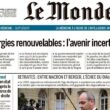On Monday (19 November), shareholders of Australia’s 177-year-old Fairfax Media are expected to approve its A$4bn ‘merger’ with the Nine Entertainment Company (NEC). What is really an all-share acquisition will bring together the Channel Nine TV network and the country’s most famous newspapers – the Sydney Morning Herald, Melbourne’s The Age, and the Australian Financial Review.
The enlarged NEC will reach over 50% of the Australian population and have EBITDA of more than A$500m. The economic heart of the deal is the A$1.4bn Domain property digital (60% owned by Fairfax), a 54% share of Macquarie Media (one of the country’s largest radio groups), ownership of the 1.25m-subscribers Stan video streaming service (launched jointly by Nine and Fairfax), and the dominant Stuff web site in New Zealand. NEC will leapfrog News Corp to become Australia’s largest media group. But that is only part of the story.
Australia has been producing world class businesses for much longer than the 27 years of continuous economic growth which have created what The Economist recently described as “perhaps the most successful rich economy”. But, even before Australia’s 21st century transformation, its world leaders in retail, distribution, finance, mining, and media were products of fierce head-to-head competition in relatively small domestic markets: world champion businesses were created in the heat of competition where only the winners could survive.
In media, the ownership concentration helped broadcasters and publishers to achieve higher profit margins than their most of their worldwide peers. Now, it has become one of the first countries to deregulate traditional media with legislation which removed the restrictions that had previously prevented companies owning newspapers, television and radio stations in the same city. It also abolished the rule which had prevented a single TV broadcaster from reaching more than 75% of the population. The legislation effectively recognised the reality of Google-Facebook-Apple-Amazon domination over the traditional companies that had themselves once defined the media market simply by controlling transmitters and printing presses.
NEC will now bring together an unrivalled portfolio of Australian media businesses spanning free-to-air and pay TV, radio, video streaming, digital services and newspapers. In characteristic style, the journalistic debate has centred on the impending loss of the Fairfax brand name and the perceived threat to the independence of its shrunken daily newspapers.
Fairfax Media has actually been walking wounded for most of the 31 years since one Warwick Fairfax bankrupted his family business by taking it private with hundreds of millions of debt. It took him less than three years to blow his inheritance. In the aftermath of corporate tragedy, the company was fought over by the likes of Conrad Black, Robert Holmes a Court, Tony O’Reilly, Gina Rinehart, Kerry Packer (long-time owner of Channel Nine), and Rupert Murdoch.
The debacle seemed to explain Fairfax’s spectacular loss of its much-vaunted “rivers of gold” classified advertising. Three online start-ups – Seek (jobs), Carsales (cars) and REA (property) – were variously backed by media heirs James Packer and Lachlan Murdoch. The startups rapidly captured the Aussie market but not before being offered to, and rejected by, a complacent Fairfax.
By 2012, the news group’s collapsing profitability precipitated the loss of A$2.7bn and 1,900 jobs, and it’s been downhill ever since. NEC has been through the wars too. Along with the former ACP Magazines, the TV group was sold to private equity by James Packer in 2006, just months after his father’s death. He decided to concentrate on investment in casinos and the impatient timing initially worried observers. But Packer and his investors were soon laughing all the way to the bank over a peak-market A$5bn price tag which eventually all but drowned the local operations of CVC Capital Partners.
Seven years years later, Nine bounced back with an IPO. And, in 2017, long-promised Aussie legislation dramatically loosened the ties on media ownership. The reform was not really any kind of far-sighted political vision but the result of decades of not-so-subtle campaigning. Kerry Packer had spent much of his later life being assured by politicians that he would (soon…) be allowed to do exactly this deal. Rupert Murdoch’s Aussie newspapers – in ways that are difficult to imagine elsewhere in News Corp – have continually rubbished their closest rival Fairfax and predicted its demise.
In 2016, James Packer and Lachlan Murdoch even collaborated in a book prematurely celebrating the “death” of Fairfax. This year’s surprise ‘merger’ deal was sprung by former Treasury Minister Peter Costello (now chair of Nine) and Fairfax chair Nick Falloon (who had previously been CEO of what is now NEC).
The deal is significant, beyond the shores of Australia, because it coincides with a real change in the prospects for traditional media everywhere. The emergence of fake and faulty digital news has had the unexpected consequence of reinforcing the value of traditional news brands among paying audiences and – at the same time – persuading Facebook and Google not to become mainstream content producers.
For all the earlier warnings that traditional media had to ‘get’ tech before the tech companies ‘get’ media, it is becoming clearer than ever that the tech companies have (mostly) been warned off. Despite the intense competition among content providers in the nascent video streaming market, it is now easy to envisage two broad types of media business in the future:
- Technology firms funded primarily by advertising, marketing and data
- Content companies funded primarily by readers, viewers and members
The distinction will not, of course, always be so neat and clean, evidenced by the competition in streaming and e-commerce; and few media groups will abandon the search for some advertising revenue. But it seems clear that the best traditional media companies will increasingly find profitable new ways to distribute news, information and entertainment across the whole range of video, audio, reading, experiential media, e-commerce and interactive services.
There will be an explosion of cross-media brands that will ease their journey through media convergence. That’s the significance of the NEC deal. However, we can’t assume there is a robust, far-reaching strategy ready to execute. After all, this deal can be paid-for, in the medium-term, just by staff savings and the cross-promotion of Domain, Stan, and Nine Network TV. But NEC can soon be expected to develop a powerful multi-channel approach, as follows:
Content: centralised production and commissioning for News, Sports, Finance, Lifestyle, and Entertainment with ‘super brands’ for each category that will appear online, on TV, radio and in print.
Subscriptions: marketed in packages across streaming, payTV, and print
Retail: branded e-commerce, information services and events promoted across all media
That strategy would represent a new kind of media fluidity for traditional media as it navigates the digital rapids. It can become the inspiration for media groups everywhere when they – and their governments – get up to speed. The future is there.




